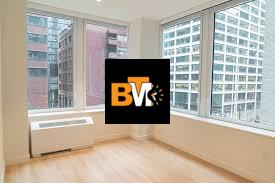In the wake of global shifts in work culture and economic trends, cities worldwide are facing a new challenge: what to do with the growing inventory of empty or underutilized office buildings. As remote work gains permanence and companies downsize their physical footprints, developers and urban planners are turning to innovative solutions— chief among them is the transformation of commercial spaces into mixed-use developments. But why is this trend gaining traction, and what does it mean for the future of the built environment?
A Response to Remote Work and Economic Uncertainty
The pandemic ushered in a remote work revolution showing remarkable staying power. With many employees continuing to work from home full-time or in hybrid arrangements, companies are rethinking the need for expansive office real estate. The resulting vacancies have left landlords and cities scrambling to fill revenue and urban vibrancy gaps.
Turning these vacant properties into residential units, retail hubs, or community spaces offers a practical and profitable path forward. These conversions breathe new life into otherwise idle buildings, keeping neighborhoods active and economically viable.
Sustainability Through Adaptive Reuse
From an environmental perspective, adaptive reuse—the process of repurposing buildings for new uses—is significantly more sustainable than demolition and new construction. Reducing the need for raw materials and cutting down on waste aligns with the global push for greener cities. Reusing the building’s skeleton and infrastructure often shortens timelines and lowers carbon footprints.
For developers managing a commercial construction project, this shift represents an opportunity to innovate without starting from scratch. By working with existing structures, projects often become more cost-effective while still meeting modern standards for design and utility.
Mixed-Use: More Than Just a Trend
Mixed-use developments combine residential, commercial, cultural, or institutional uses within a single space. These projects promote walkability, reduce traffic congestion, and create 24/7 energy in urban areas that might otherwise go dark after work hours.
Cities like New York, Chicago, and San Francisco encourage or even incentivize these conversions. Municipalities aim to promote economic diversity through zoning adjustments and grants, ensure public safety, and keep downtown districts from becoming hollowed-out remnants of pre-pandemic life.
Challenges and Considerations
While the benefits are clear, the path to mixed-use conversion has obstacles. Zoning laws, building codes, and plumbing or ventilation systems designed for offices can pose challenges when retrofitting for residential or retail use. Additionally, funding such transformations requires significant investment and long-term vision, which not all property owners possess.
There’s also the social dimension—balancing affordability with profitability. Some cities are beginning to require a portion of newly converted residential units to be affordable housing, hoping to address multiple urban challenges simultaneously.
A Blueprint for the Future
Ultimately, transforming office buildings into mixed-use spaces reflects a broader evolution in urban planning. It’s not just about adapting to new work habits—it’s about reimagining what cities can be. By fostering diversity of use, cities become more resilient, inclusive, and livable.
For stakeholders managing a commercial construction project, understanding this shift is crucial. It signals a move away from single-purpose developments toward dynamic, community-centered spaces. As this trend unfolds, it may well define the next generation of construction and urban renewal.







Leave a Reply